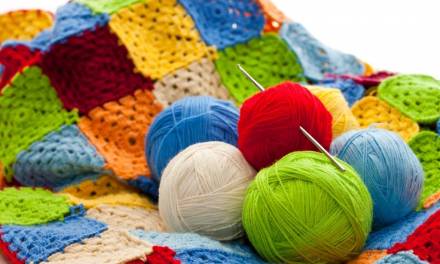Crafting has all kinds of mental and educational benefits. So if you want to improve your students’ behaviour, wellbeing and more, it’s time to start a craft club.
You can hardly have missed the rise in popularity of traditional activities – we have The Great British Sewing Bee, The Great Pottery Throw Down, Channel 4 paying millions to take over the broadcasting of The Great British Bake Off, and you probably know at least one person who knits or crochets.
Crafting is big news.
Crafting as an aid to mental wellbeing
Why might this be? Crafting has all kinds of psychological benefits. It’s been shown to help with depression, anxiety and stress; after World War I, shell-shocked soldiers were taught to knit as part of their post-traumatic stress disorder treatment. It also improves concentration, attention and creativity.
The repetitive nature of crafts such as knitting and crochet activates the parasympathetic nervous system, which quiets the ‘fight or flight’ response that causes stress. This can also help calm students with behavioural problems.
In fact it’s even being used in prisons to improve inmates’ socialisation. Knitting has also been shown to increase the brain’s dopamine levels, acting as a natural antidepressant.
Why start a craft club in your school?
The dexterity required for crafting improves children’s fine and gross motor skills, with teachers reporting that students who knit have better hand/eye co-ordination. According to anecdotal evidence, crafting improves the ability to focus.
It’s thought that concentrating on a small, individual project strengthens students’ attention ‘muscles’. Creating something tangible in this way also helps increase self-confidence, as does the acquisition of a new skill.
Educational benefits
There are also educational benefits to teaching students about crafts. Several involve counting, adding, multiplication, subtraction, division and so on, as well as problem solving.
And the great thing is they won’t even know you’re teaching them maths – perfect for those students who think they don’t like the subject.
Crafting itself provides a huge area of potential study that you can delve into as deeply as you choose. The history of individual crafts provides a fascinating subject.
Did you know, for example, that one theory for why prostitutes are sometimes referred to as hookers is that women employed to create crochet – known as hookers – were so poorly paid they had to turn to world’s oldest profession? It’s also why knitting was considered a suitable pastime for ladies, while crochet was a little less salubrious. Such theories are probably best kept for older students…
There’s also the subject of textiles. Children can learn about different materials such as wool, cotton, silk and so on, and how they originate.
You can even incorporate geography, talking about how different styles of knitting and crochet have come from different countries; Estonia’s delicate and intricate lace knitting, the multicoloured knits from Fair Isle and the woven effect of Tunisian crochet, for example.
The studies all agree that crafting has significant benefits for both mental health and educational achievement, and the research is ongoing into why this might be so there are likely to be more such findings in the future.
So what are you waiting for? Now is the time to set up that craft club.
Rebecca has been a writer and editor for almost 20 years. She writes on a huge range of subjects, concentrating on sport, nature, mental health, and crafts.









